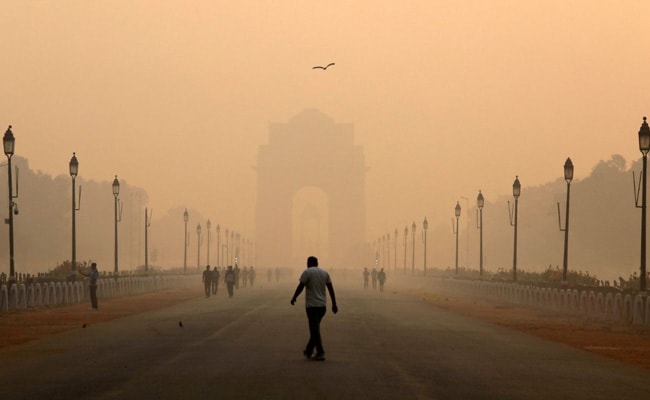
Delhi recorded the highest number of air pollution-related deaths in the study period (Representative)
New Delhi:
Nearly 33,000 deaths in 10 cities in India each year can be attributed to air pollution levels that are below India’s national clean air threshold. The report is published in Lancet Planetary Health.
India’s clean air standards are currently well above the World Health Organization guidelines of 15 micrograms in every cubic meter of air. The report states that India needs to drastically reduce its clean air standards to at least meet WHO guidelines to protect citizens from the dangers of polluted air.
The authors used data on exposure to PM2.5 in 10 cities and daily death counts between 2008 and 2019.
Even air pollution levels below India’s current air quality standards lead to increased daily death rates in the country, the study found.
“In 10 cities in the country – Ahmedabad, Bengaluru, Chennai, Delhi, Hyderabad, Kolkata, Mumbai, Pune, Shimla and Varanasi, around 33,000 deaths per year can be attributed to air pollution levels that are above WHO guidelines .
“A significant number of deaths were also observed in cities not considered to have high air pollution, such as Mumbai, Bengaluru, Kolkata and Chennai,” he said, adding, “India’s national air quality standards should become stricter and efforts to control air pollution redoubled”.
Between 2008 and 2019, 7.2% of all deaths (approximately 33,000 each year) in these 10 cities could be linked to short-term exposure to PM2.5 that was higher than the WHO guideline value of 15 micrograms per meter air cube. , the study found.
“Every 10 microgram per cubic meter of air increase in short-term exposure to PM2.5 was associated with a 1.42% increase in daily deaths. This estimate nearly doubled to 3.57% when we used a causal modeling approach that isolates the effect of location. sources of air pollution”, the announcement states.
Delhi recorded the highest number of air pollution-related deaths in the study period – a staggering 11.5%, or 12,000 deaths each year. “The deaths were attributed to short-term exposure to PM.5 higher than the WHO guideline value,” the study showed.
“Every 10 micrograms per cubic meter of air increase in short-term exposure to PM.su was associated with a 0.31% increase in daily deaths.”
Varanasi recorded the second highest number of deaths during the period – 10.2% or about 830 deaths per year, attributable to short-term exposure to PM2.5 higher than the WHO guideline value. Every 10 micrograms per cubic meter of air increase in short-term exposure to PM.su was associated with a 1.17% increase in daily deaths, the study showed.
About 2,100 died in Bengaluru, 2,900 in Chennai, 4,700 in Kolkata and about 5,100 in Mumbai each year due to increased air pollution during the study period. All deaths were attributed to short-term exposure to PM2.5 higher than the WHO guideline value.
The lowest air pollution levels were recorded in Shimla. However, air pollution was still a risk in the hill town with 3.7% of all deaths – 59 per year – attributed to short-term exposure to PM2.5 higher than the WHO guideline value. “The results from Shimla add credence to the global evidence that there is no safe level of exposure to air pollution,” the study pointed out.
It is the first multi-city study to assess the relationship between short-term exposure to air pollution and deaths in India, with the cities included spanning a wide range of air pollution concentrations and located in different agro-climatological zones, it said. in a press release.
The study was conducted by researchers from the Sustainable Futures Collaborative, Ashoka University, the Center for Chronic Disease Control, Sweden’s Karolinska Institute, Harvard and Boston Universities, and other locations.
There was a large increase in the risk of death at lower PM2.5 concentrations and a decrease at higher concentrations, with significant effects observed below the current national ambient air quality standard of 60 micrograms per cubic meter of air for a 24-hour exposure. , it was said.
#Shortterm #exposure #air #pollution #kills #Indians #year #Report
Image Source : www.ndtv.com

